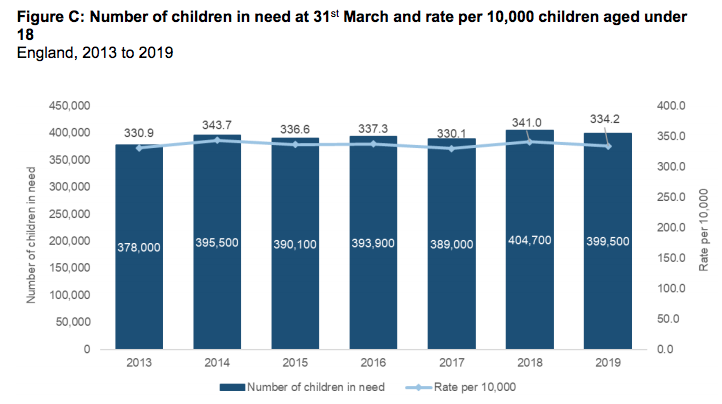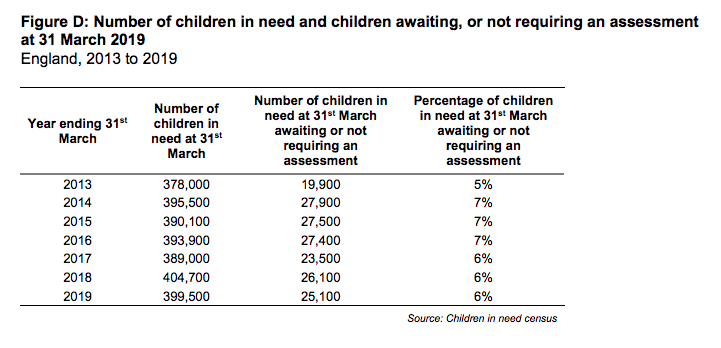Increase in children at risk and in need slows
Joanne Parkes
Thursday, October 31, 2019
The number of children assessed as at risk of harm has fallen by three per cent in the last year, according to official statistics published today.

There were 52,300 children subject to a child protection plan (CPP) on 31 March 2019, compared with 53,790 the previous year, according to Characteristics of Children in Need: 2019, published by the Department for Education.
This somewhat reverses the sharp rise of 5.3 per cent seen last year on the 2017 figure, but remains higher than the level five years ago in March 2014, when it was 43,190.
The number of CPPs starting during the year fell by three per cent to 66,700, and the number ending in the same period continued to increase, up three per cent to 67,900.
The figures also show a small decrease of one per cent in the number of children in need of support, with 388,500 recorded at the end of March this year.
At the same time last year there were 404,710 children classed as being in need, up four per cent on 2017, when 389,040 were in this category.
- Analysis: Government outlines efforts to reform children's services funding
- Spending Round: key measures for children and family services
- Feature: The contextual safeguarding debate
The report states: "Both the number and rate of children in need at 31st March have fluctuated over the last seven years, with no long-term increasing or decreasing trend."

Source: DfE
The report points towards this year's decrease in children in need being in part due to a rise of three per cent (to 343,000) in the number that ended an episode of need.
The number that started an episode in 2018/19 was relatively unchanged compared with last year at 381,900.
The number of children in need assessments completed in the year has increased in each year since 2014/15, rising by 17 per cent from 550,800 in 2014/15 to 644,700 this year.
In the same period the average duration of assessments increased from 28 to 32 working days.

For children in need that became the subject of a CPP over the same period, neglect (48 per cent) remained the most common initial category of abuse in 2018/19, followed by emotional abuse (35 per cent).
However, since 2012/13 there has been an increase in the percentage of children that had neglect and emotional abuse recorded as the initial category of abuse.
In contrast, there has been a drop in the rate of recorded sexual, physical or multiple abuse over the same period.
Domestic violence, whether directly affecting the child or another member of the household, was the factor most commonly identified at the end of a child in need assessment, followed by mental health.
The figures come nearly two months after the Chancellor announced an extra £1bn in his public spending package for 2020/21, for councils to spend on children and adult social care.
But there were no further details around how that would be apportioned.
The National Association of Head Teachers (NAHT) highlighted members' concerns about underfunding of children's social care and early help, with schools "uniquely placed to identify issues" and refer safeguarding concerns to councils.
Paul Whiteman, general secretary NAHT, said: "Local authorities have faced an unprecedented surge in demand for children's social care support over recent years.
"This demand, coupled with the huge financial pressures local authorities are under, means that the limited resources they have available are increasingly being taken up with the provision of urgent help for children and families already at crisis point.
"This is leaving very little to invest in early intervention.
"The government cannot ignore the funding and capacity pressures on all of those services. All children deserve timely, efficient and high-quality support when they need it."




